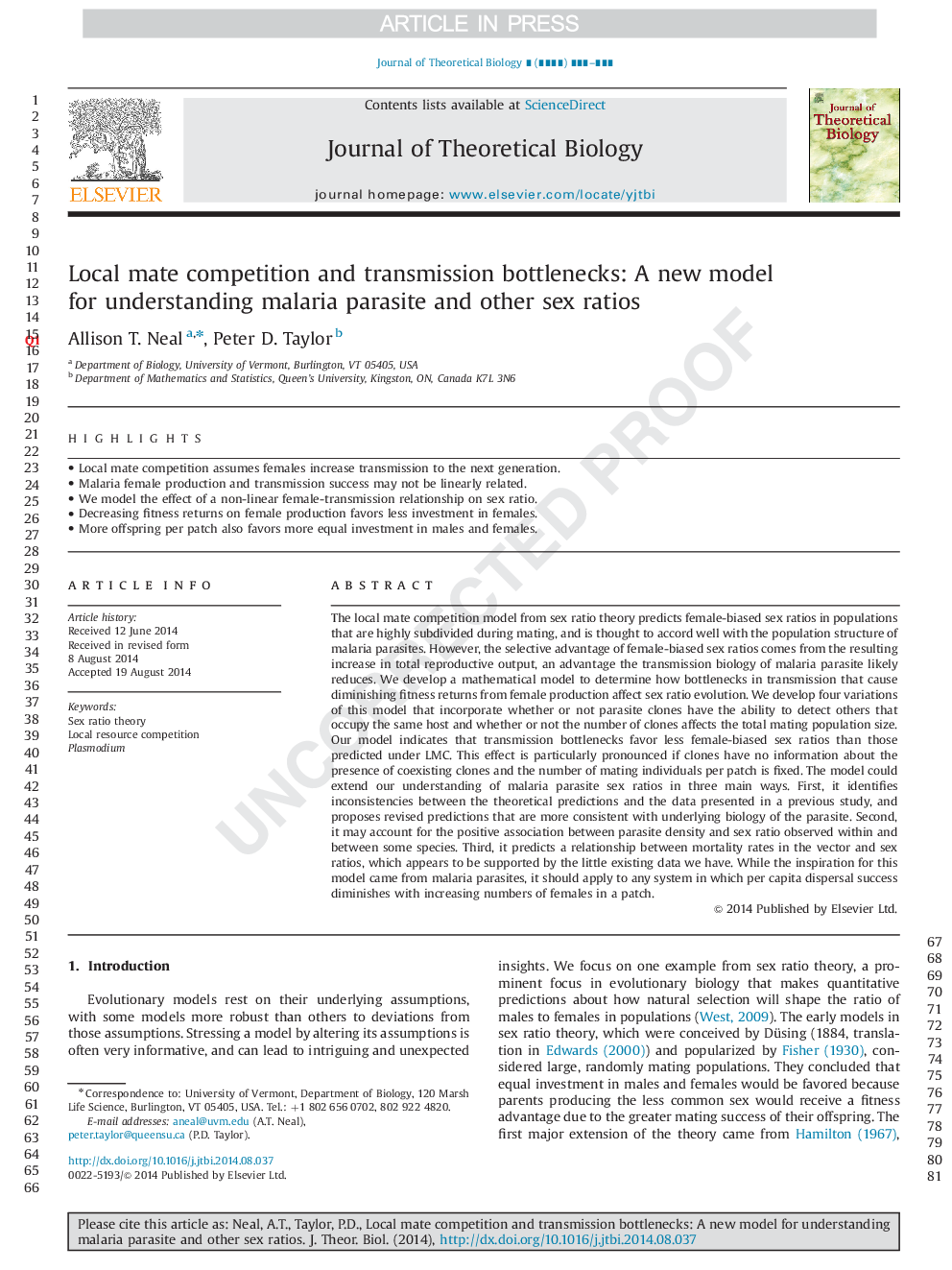| کد مقاله | کد نشریه | سال انتشار | مقاله انگلیسی | نسخه تمام متن |
|---|---|---|---|---|
| 6370249 | 1623847 | 2014 | 9 صفحه PDF | دانلود رایگان |
عنوان انگلیسی مقاله ISI
Local mate competition and transmission bottlenecks: A new model for understanding malaria parasite and other sex ratios
ترجمه فارسی عنوان
رقابت محلی و تنگناهای انتقال: مدل جدید برای درک انگل مالاریا و دیگر نسبت جنسیت
دانلود مقاله + سفارش ترجمه
دانلود مقاله ISI انگلیسی
رایگان برای ایرانیان
کلمات کلیدی
نظریه نسبت جنسی رقابت محلی پلاسمودیوم،
موضوعات مرتبط
علوم زیستی و بیوفناوری
علوم کشاورزی و بیولوژیک
علوم کشاورزی و بیولوژیک (عمومی)
چکیده انگلیسی
The local mate competition model from sex ratio theory predicts female-biased sex ratios in populations that are highly subdivided during mating, and is thought to accord well with the population structure of malaria parasites. However, the selective advantage of female-biased sex ratios comes from the resulting increase in total reproductive output, an advantage the transmission biology of malaria parasite likely reduces. We develop a mathematical model to determine how bottlenecks in transmission that cause diminishing fitness returns from female production affect sex ratio evolution. We develop four variations of this model that incorporate whether or not parasite clones have the ability to detect others that occupy the same host and whether or not the number of clones affects the total mating population size. Our model indicates that transmission bottlenecks favor less female-biased sex ratios than those predicted under LMC. This effect is particularly pronounced if clones have no information about the presence of coexisting clones and the number of mating individuals per patch is fixed. The model could extend our understanding of malaria parasite sex ratios in three main ways. First, it identifies inconsistencies between the theoretical predictions and the data presented in a previous study, and proposes revised predictions that are more consistent with underlying biology of the parasite. Second, it may account for the positive association between parasite density and sex ratio observed within and between some species. Third, it predicts a relationship between mortality rates in the vector and sex ratios, which appears to be supported by the little existing data we have. While the inspiration for this model came from malaria parasites, it should apply to any system in which per capita dispersal success diminishes with increasing numbers of females in a patch.
ناشر
Database: Elsevier - ScienceDirect (ساینس دایرکت)
Journal: Journal of Theoretical Biology - Volume 363, 21 December 2014, Pages 381-389
Journal: Journal of Theoretical Biology - Volume 363, 21 December 2014, Pages 381-389
نویسندگان
Allison T. Neal, Peter D. Taylor,
